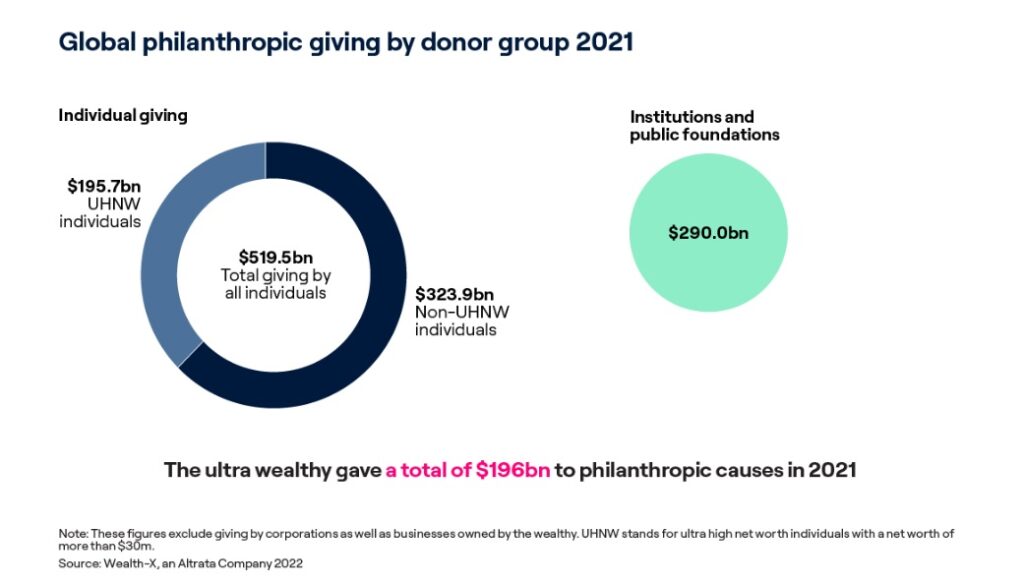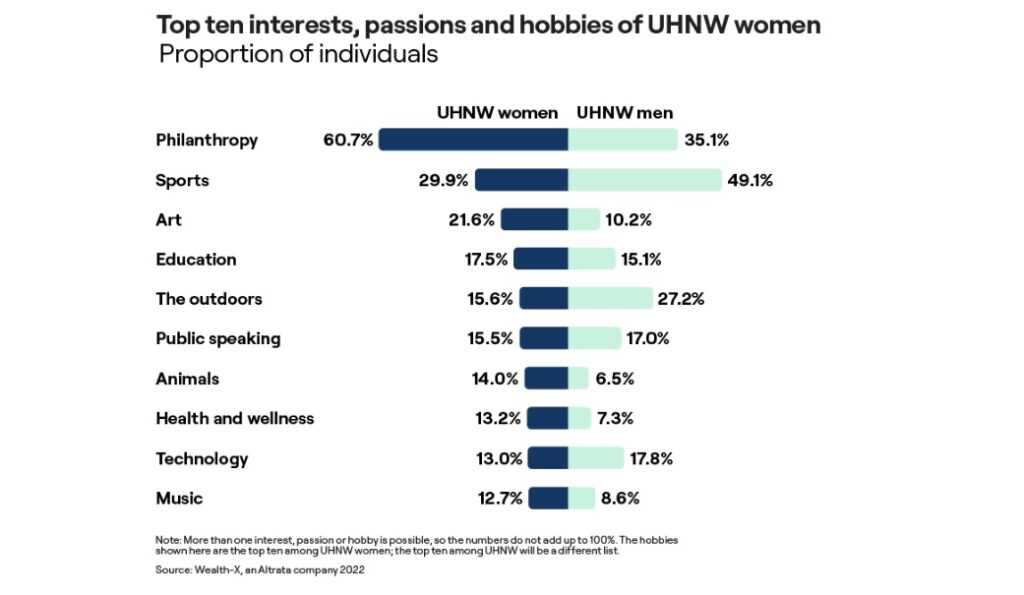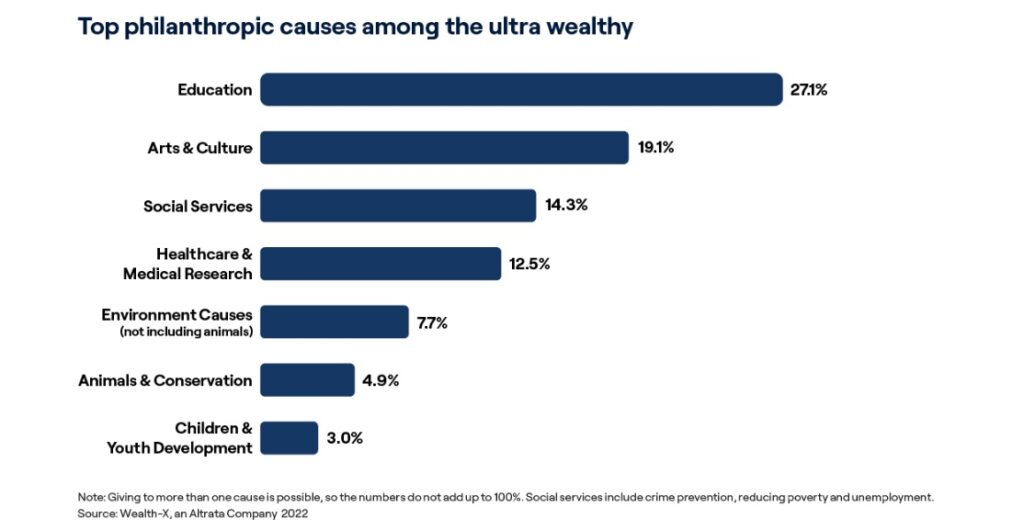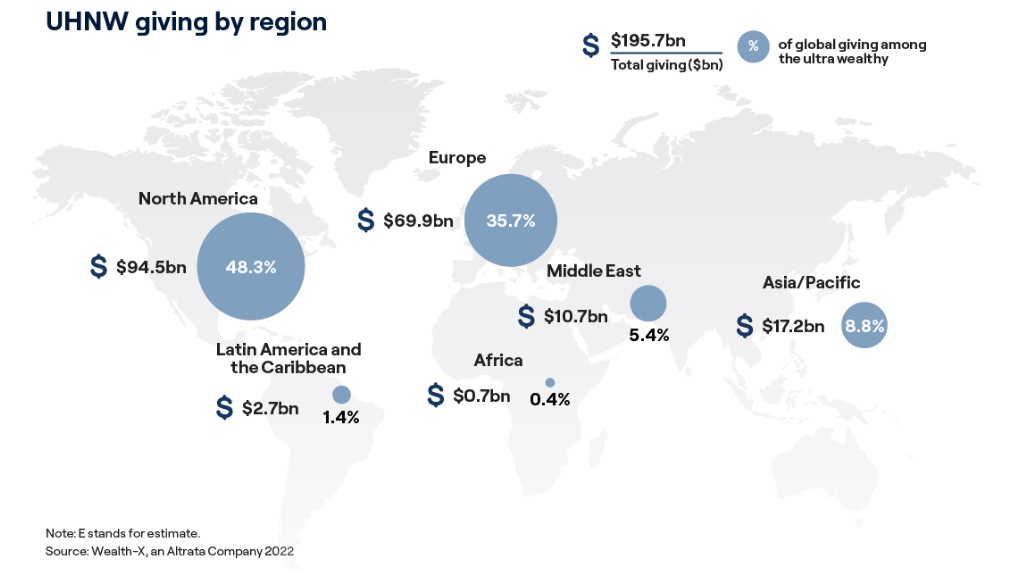Despite accounting for only 1.1% of the worldwide millionaire population, ultra High Net Worth (UHNW) people provided 24% of all global philanthropic giving in 2021, according to a new report on global philanthropy trends.
The number of ultra-high-net-worth (UHNW) individuals (those with a net worth of $30 million or more) declined by 6% in the first half of 2022, to 392,410. Because of this tendency, as well as the general population’s economic constraints, nonprofit fundraisers must be prepared for increased competition when asking for major gifts.
1.1% of UHNW made 24% of all philanthropic donations
According to Altrata’s research, “Global Philanthropy Trends of Ultra High Net Worth Individuals,” this group contributed $195.7 billion in philanthropic giving in 2021, despite the fact that there are less than 400,000 ultra wealthy people in the world today. This accounted for 38% of all individual donations that year, as well as 24% of all contributions from all sources, including institutions and foundations.

Institutions and foundations gave around 36% of all philanthropic donations in the same year. However, many of these organizations are run or controlled by incredibly wealthy people.
According to Altrata, a global leader in data analytics on the wealthy and powerful, nonprofit fundraisers should harness their existing donor network before seizing new market possibilities.
The global contribution of UHNW individuals to philanthropy will remain strong for many years to come. However, philanthropic contributions per individual have not increased significantly or sustainably since 2020, the report says.
Philanthropy is a top priority for the ultra-rich
Philanthropy is a top priority for the ultra-rich, according to Wealth-X data for 2021. This is especially true for women. In 2021, charity was named as one of the top ten interests, passions, or hobbies by the majority of women (60.7%), the only choice with a majority. Sports came in second with 29.9%.

In comparison, just 35.1% of males ranked philanthropy among their top ten, while almost half (49.1%) ranked sports. Still, for both genders, these two factors dominate Art, Education, and the Outdoors, among others.
In 2021, 27% of ultra-wealthy donors gave to education, 19% to arts and culture, 14% to social services, and 12% to healthcare and medical research.

Geographical diversification of the philanthropy trends
Donations from the ultra-wealthy have surged in certain areas while decreasing in others. Donations in North America, Europe, the Middle East, and Latin America climbed by billions of dollars between 2020 and 2021, correspondingly. Meanwhile, giving in Asia-Pacific and Africa has declined by several billion dollars.
Not always indicative of continued decline in such areas. As previously noted, during COVID-19, giving increased. Reduced contributions in these places in 2021 may indicate a return to the status quo. Even before the outbreak, certain regions lagged behind others in terms of population.
There are also systemic barriers to charitable giving among the ultra-wealthy in some countries, such as the lack of tax breaks in a number of Asian countries. “This is a huge issue since individuals donate out of their own generosity with little or no tax advantage, which is a great motivation in North America in particular,” according to Alliance’s analysis.

Nonetheless, for individuals with the right strategic approach, there are fundraising opportunities in these regions. “The whole NGO sector must embrace a new strategy to fundraising in this situation,” argues Alliance. “Along with successful models from developed countries, [NGOs] require persons with strong local relationships and cultural knowledge to lead these programs.”
These 2021 patterns underline an important point: charity organizations cannot rely on a linear growth approach for fundraising, Altrata’s analysists note. When overall expenditures remain flat, information about contributors’ interests, preferences, and geographical contributions may help NGOs stay afloat. These insights can also contribute to more robust growth during times of high output.



